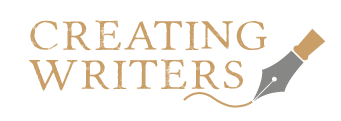In my last post I wrote about “show” and “tell.”
Books need both to make narrative sparkle. That requires balance and clear purpose to your writing. So let’s look at that balance in a little more detail.
Remember, if your book has lots of “showing” it will get longer and longer. Too much “telling” and it will be shorter.
For example:
Tell: “James took the train from London to Manchester and then caught a taxi to his hotel.”
Okay. From that short sentence we can infer that the train journey is nothing more than a device to move the story from London to Manchester. As a sentence, it does what it’s meant to do.
Or:
Show: “John caught an evening train to Manchester, wedging himself into a window seat, and stared out at darkening skies and the occasional gathering of lights from a passing town. He avoided eye contact with the passengers around him; he didn’t want unwelcome conversation. When people around him did start talking, he would close his eyes and pretend to be asleep. When the train pulled into Manchester, he got off last and, breathing the strange air of a new city, caught a taxi to his hotel.”
Also okay. But here, the reader will sense that that there is more going on than a simple journey. It will raise questions in their minds which you, the writer, will have to answer at some point.
Or another example:
Show: “John had wanted to watch the news on TV but was hungry and made himself a ham and cheese sandwich. Then he stood by the kitchen window and watched the sunset, washed his plate, put the rest of the cheese and ham back in the fridge, and then realised that he’d missed the news.”
There may be a point to this. If so, great. If not, is it really necessary? Is it to signal that John is also thinking about something else? That he’s being distracted by something?
The reader may jump to that conclusion, which may turn out to be a wrong conclusion. Beware leading your reader down a garden path unless, of course, that’s your intention. (And even then, be careful: readers don’t like to be deliberately misled).
Or:
Tell: “John had wanted to watch the news on TV, but missed it.”
This is also equally okay. You’ve imparted information and can move on.
Using the two examples above, it’s easy to see how “show” can give clues to character, nuances to plot, or hints of emotion. “Tell” simply gives facts, nothing more.
“Show” invites the reader into the story. Why was he behaving so oddly on the train? Is he hiding something? Why did he want to watch the news? Why was he distracted?
“Tell” puts distance between a character and the reader. In the “tell” examples above, we learn nothing about the character, except that he’s caught a train or missed the news.
But if neither is an important event, perfectly fine: you haven’t wasted your reader’s time by “showing” them something that’s irrelevant.
“Show” is also a useful way to slow down the pace of narrative and dialogue. Essentially, by interjecting descriptive passages, you’re writing in a mental pause.
If you look back at the examples above, the narrative is greatly extended in the “show” versions. But they also provide the reader with breathing space.
That can be important if there’s been a quick-fire exchange of dialogue or an action scene. You’ll want to give your reader a few moments to digest what’s just happened.
As with all writing, it’s a balance you have to strike. But it’s a balance you have to follow throughout your book.
A chapter full of “showing” followed by a chapter full of “telling” will look odd. Your balance will have been lost.
Courses
If you need help getting started on your writing journey, Creating Writers has two online creative writing courses, an introductory course and our flagship Diploma course.
It’s an intensive course, with lots of face-to-face tuition. It also comes with a real qualification at the end of it.
That could not only kick-start your writing career but provide you with a valuable qualification for your resume.
Our courses are intended to give you the confidence and skills to understand what makes great writing. On the Diploma course, we’ll also get you started on your novel.
For more information, you can contact us here.
Photo by Patrick Fore on Unsplash

